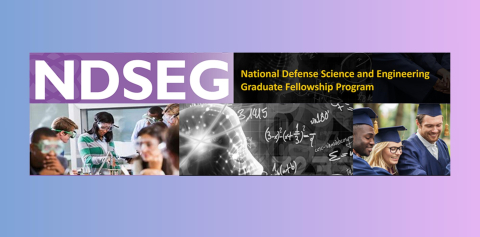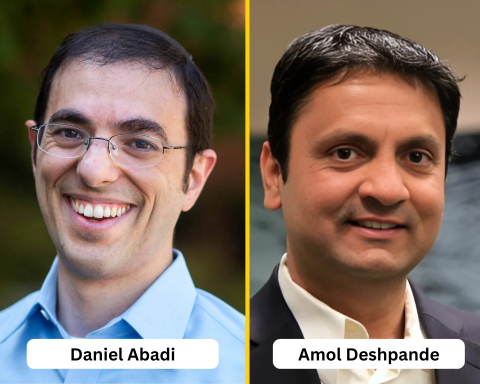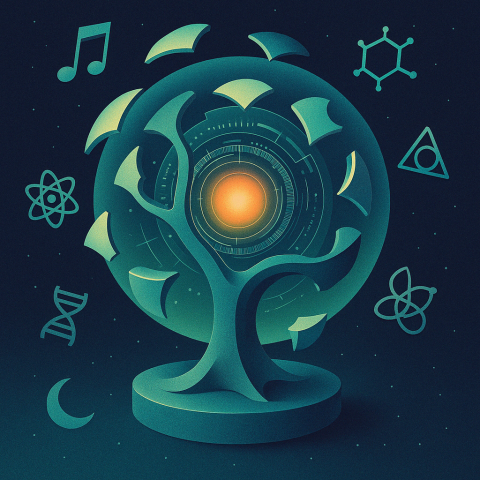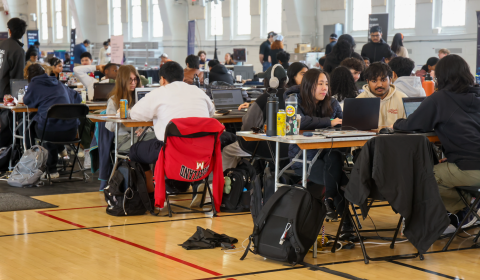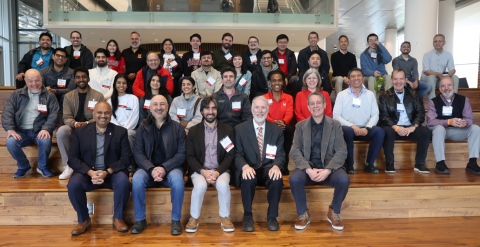Recent News & Accomplishments
2025
Inspired by a childhood fascination with programming, Cupps developed a course planning tool now used by thousands of University of Maryland students.
When the COVID-19 pandemic shuttered schools and confined many indoors, University of Maryland computer science major Andrew Cupps found an opportunity to deepen a childhood interest: programming. Years later, that interest culminated in the launch of Jupiterp , a course planning tool tailored specifically for UMD students. Since its debut in March 2024, the platform has attracted over 9,000 users and established Cupps as a recognizable name among his peers. Even as a teenager, Cupps said the drive to create useful tools was already taking shape. "Even though what I wanted to do back in high... read more
A federal scientist working in the Joint Center for Quantum Information and Computer Science (QuICS) is being recognized by the Washington Academy of Sciences for his groundbreaking research and scholarship involving quantum information science. Yi-Kai Liu , a computer scientist in the Applied and Computational Mathematics Division at the National Institute of Standards and Technology (NIST), will receive the Excellence in Research Award in Computer Science on May 8 at the academy’s annual meeting, held this year at the Ceresville Mansion in Frederick, Md. Liu works on the University of... read more
Ghosh shares insights on his latest research and the potential of multimodal reasoning.
When Sreyan Ghosh began his journey in computer science, he found himself drawn to a topic with limited academic visibility in the United States—speech processing. After completing his undergraduate studies in India and working with several research labs there, Ghosh sought a program that would provide him with the flexibility to pursue emerging areas in artificial intelligence. That search led him to the University of Maryland’s Department of Computer Science, where he now conducts research under Distinguished University Professor Dinesh Manocha . Ghosh’s latest project, Audio Flamingo 2 ,... read more
A University of Maryland junior who has built an impressive record of service at the city, county and state levels has been awarded a Truman Scholarship , the nation’s most selective award for underclassmen with exceptional leadership potential, a commitment to a career in government or the nonprofit sector, and demonstrated academic excellence. Dhruvak Mirani, a dual-degree student in computer science and government and politics, with a concentration in international relations, is the 11th UMD student to earn the honor that memorializes President Harry S. Truman. It provides up to $30,000... read more
Three students working with Chris Metzler , an assistant professor of computer science at the University of Maryland, have been awarded the prestigious Department of Defense National Defense Science and Engineering Graduate (NDSEG) Fellowship. Adam Yang, a senior majoring in computer science, along with first-year computer science doctoral students Sachin Shah and Anand Idris , are among a select group of students nationwide selected to receive this year’s highly competitive NDSEG Fellowship. Established in 1989, the NDSEG Fellowship program aims to increase the number of U.S. citizens... read more
They were recognized for their enduring contributions to data stream systems.
University of Maryland professors Daniel Abadi and Amol Deshpande were recognized with Test of Time awards at the 2025 Conference on Innovative Data Systems Research (CIDR) for their early contributions to developing data stream systems. Their research, published nearly two decades ago, played a key role in advancing real-time data processing, a capability now widely used across sectors. The awards honored two influential systems— Borealis , co-authored by Abadi, and TelegraphCQ , developed by Deshpande and colleagues. The projects addressed the growing need in the early 2000s to move beyond... read more
Language isn’t always necessary. While it certainly helps in getting across certain ideas, some neuroscientists have argued that many forms of human thought and reasoning don’t require the medium of words and grammar. Sometimes, the argument goes, having to turn ideas into language actually slows down the thought process. Now there’s intriguing evidence that certain artificial intelligence systems could also benefit from “thinking” independently of language. When large language models (LLMs) process information, they do so in mathematical spaces, far from the world of words. That’s because... read more
Senior computer science major Nandini Shah co-leads several campus clubs, including the Association for Women in Computing and the Korean pop dance group Ganji.
Nandini Shah has always been a “joiner”—someone who loves the camaraderie of clubs. So when Shah enrolled in the University of Maryland’s undergraduate computer science program in 2021, she wasted no time getting involved in campus life. “When you're in a new space, I feel that clubs are the best way to get a sense of community,” Shah said. “Through clubs, I've met so many people who helped me become who I am today and exposed me to different career opportunities.” Now a senior with multiple leadership roles, Shah’s calendar is regularly booked. She serves as co-president of UMD’s Association... read more
More than 1,000 high school and college students gathered at Reckord Armory from April 11–13 for the 36-hour event, building projects in cybersecurity, machine learning, quantum computing and more.
The University of Maryland hosted the 11th anniversary of Bitcamp , one of the East Coast’s largest collegiate hackathons, from April 11–13, 2025, at the Reckord Armory . Over 1,000 students from across the region, including 300 from outside the university, participated in the 36-hour event, which featured programming challenges, technical workshops and expert mentorship opportunities. Designed to be accessible to participants of all experience levels, Bitcamp provided a structured yet flexible space for students to collaborate, experiment and build software and hardware solutions. Attendees... read more
The Brendan Iribe Center gathering included a brunch, a visit to Bitcamp and the unveiling of the newly relocated Alumni Hall of Fame wall.
Alumni of the University of Maryland’s Department of Computer Science returned to campus on Saturday, April 12, for a community brunch and the unveiling of the newly relocated Alumni Hall of Fame wall. The event, held at the Brendan Iribe Center for Computer Science and Engineering , brought together graduates from several decades and offered a guided tour of the building and a walk over to Bitcamp , the student-run hackathon. The wall, previously located in the Computer Science Instructional Center (CSIC), now stands prominently in the Iribe Center’s lobby, featuring photos and brief... read more




